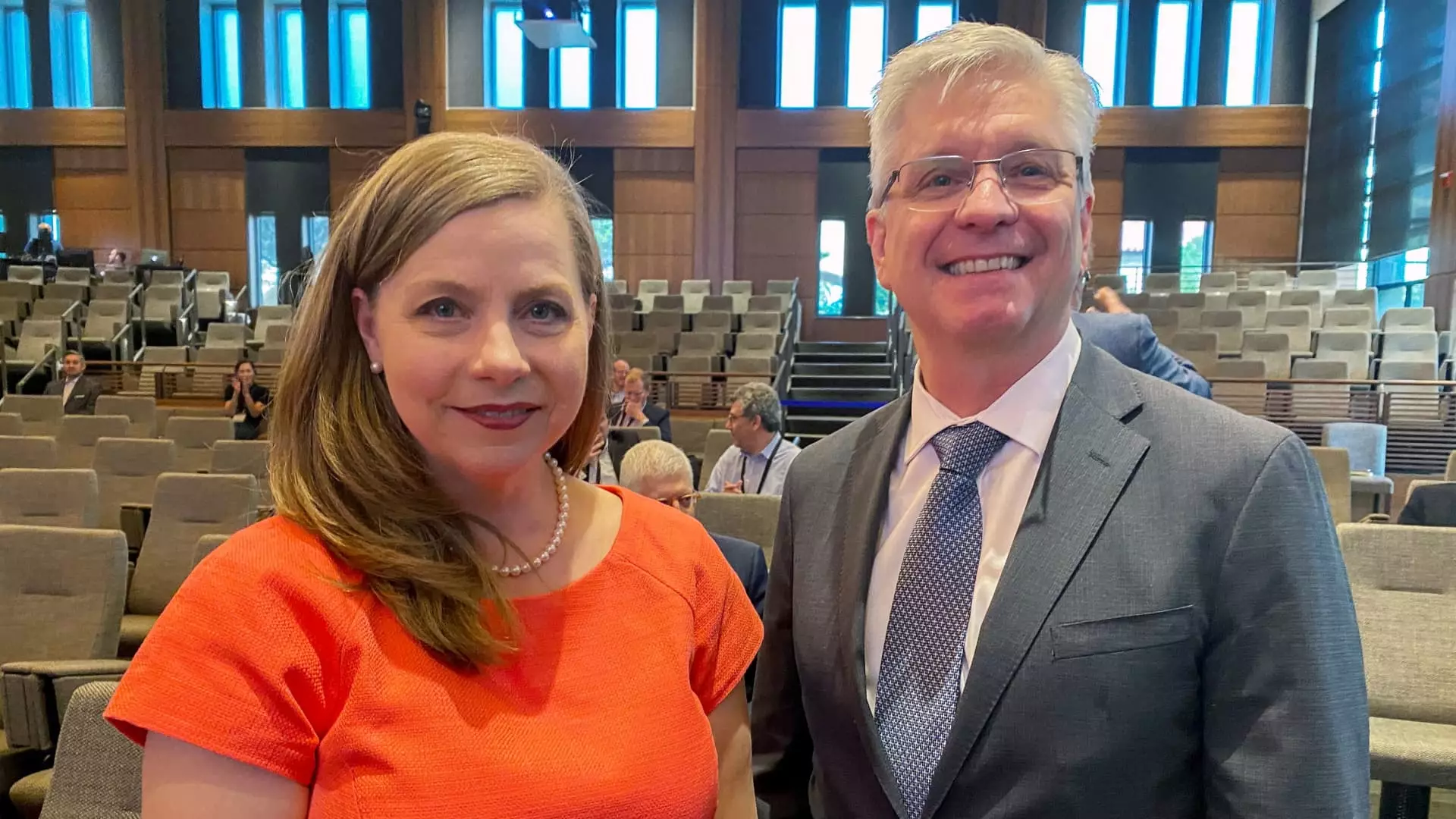The regulatory landscape of U.S. banking is witnessing significant shifts, marked by the recent early resignation of Michael Barr, the Federal Reserve’s Vice Chair for Supervision. This decision is seen as a strategic move that opens the door for a potentially more industry-friendly successor, aligning with the broader deregulatory goals of the current administration. The implications for the banking sector, particularly in light of anticipated regulatory reforms, are profound and warrant careful consideration.
Michael Barr’s Departure and Its Significance
Michael Barr’s announcement to step down from his supervisory role—18 months earlier than expected—has raised eyebrows and speculation across financial markets. Initially, Barr intended to remain in his post, navigating the complexities of oversight amidst ongoing tensions with the Trump administration, which had considered trying to replace him. However, the abrupt decision underscores the delicate interplay between regulatory leadership and the political milieu in which it operates.
Barr’s resignation is not merely a personal decision but a strategic pivot that may facilitate the implementation of less stringent regulations on the banking industry. His tenure was characterized by efforts to enforce the Basel III standards more rigorously, emphasizing capital reserves. However, the incoming regulatory transition, facilitated by his departure, is anticipated to shift toward an approach that may alleviate some of the financial burdens on banks, especially regarding capital requirements.
With Barr’s exit, the spotlight now shines on potential successors, particularly Michelle Bowman and Christopher Waller, both Republican members of the Federal Reserve Board. Bowman’s candidacy is noteworthy; she has previously expressed criticisms of Barr’s regulatory stance, particularly regarding his push for increased capital requirements—an initiative known as the Basel III Endgame. By supporting a regulatory framework more accommodating to financial institutions, Bowman could steer the Federal Reserve towards a more lenient regulatory environment.
Analysts suggest that an adjustment to the Basel III framework might enhance the prospects for the banking sector, specifically by reclassifying how capital requirements are established. Such reforms could undermine proposals that once threatened to require banks to reserve additional capital, potentially unlocking new avenues for growth and investment within the financial sector. For instance, easing capital constraints might enable banks to engage in more stock buybacks, thereby boosting both their profitability and market performance.
Market Reaction and Predictions
Following Barr’s announcement, the banking sector reacted positively, with significant upticks in bank stock prices. The KBW Bank Index witnessed a rise, reflecting investor optimism regarding the regulatory relaxation that may accompany Barr’s departure. Key financial institutions, notably Citigroup and Morgan Stanley, enjoyed substantial gains amidst this buoyant atmosphere. The market’s response illustrates a broader sentiment that the regulatory burden could soon ease, paving the way for enhanced economic activity within financial markets.
Analysts have noted that if the revised Basel Endgame leans toward a capital-neutral stance industry-wide, banks will likely experience increased flexibility in operational strategies. Reports indicate that if lenders successfully resist efforts demanding higher capital reserves, they could redirect substantial funds toward expansion initiatives, including share repurchases and perhaps even new investments in innovation or acquisitions.
It is important to recognize that despite his resignation from the vice chair position, Barr remains a governor on the Federal Reserve Board. This retention maintains the current Democratic influence within the Fed, presenting an intriguing dynamic where regulatory changes could occur in a bifurcated political context. Observers like Brian Graham have characterized Barr’s dual role as a strategic maneuver, allowing for continuity in oversight while simultaneously opening pathways for a regulatory agenda more sympathetic to banking interests.
This complex situation sets the stage for an evolving regulatory environment, where the potential for reform hinges not solely on individual appointments but also on the interplay of broader economic conditions and political pressures. As the landscape changes, stakeholders will be closely monitoring how the Federal Reserve navigates these challenges, particularly in terms of balancing regulatory rigor with the economic vitality of the banking sector.
The resignation of Michael Barr marks a pivotal moment in the evolution of U.S. banking regulation. As the Federal Reserve contemplates its next steps, the implications for the financial landscape are substantial. With potential new leadership poised to implement reforms, industry players must remain vigilant as they navigate this new terrain. The coming months will undoubtedly shape the regulatory framework governing banks in ways that resonate throughout the economy, influencing growth, investment, and overall market confidence for the foreseeable future.

